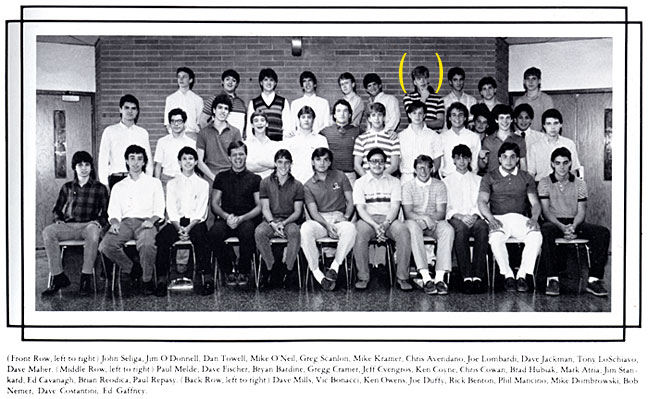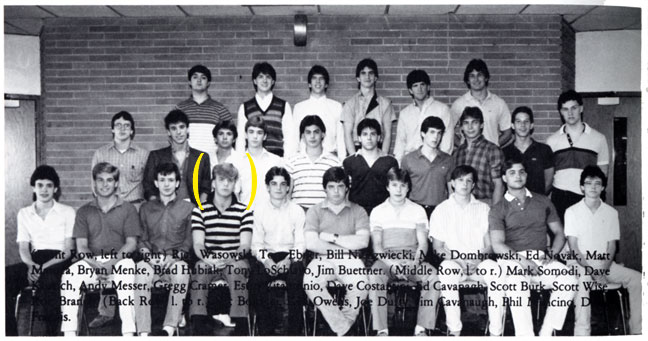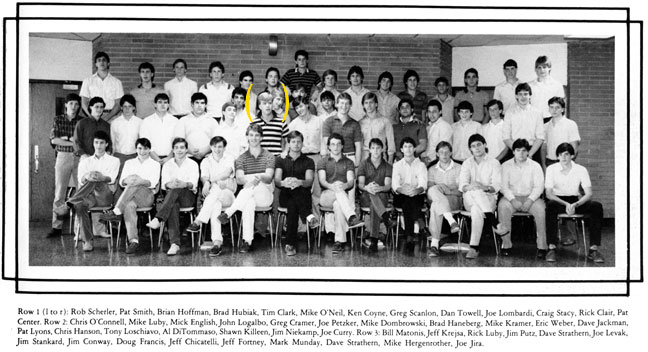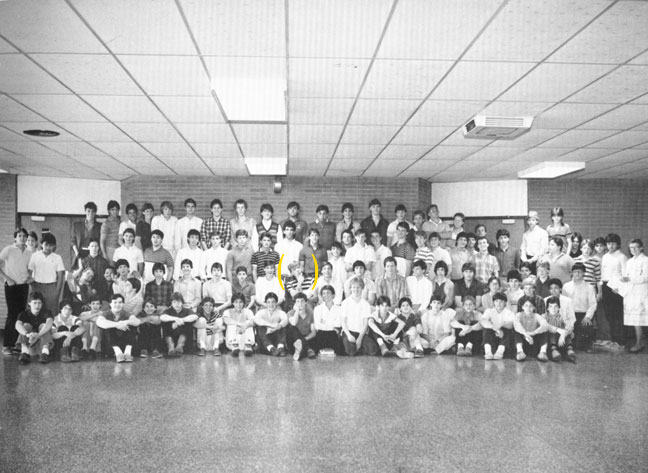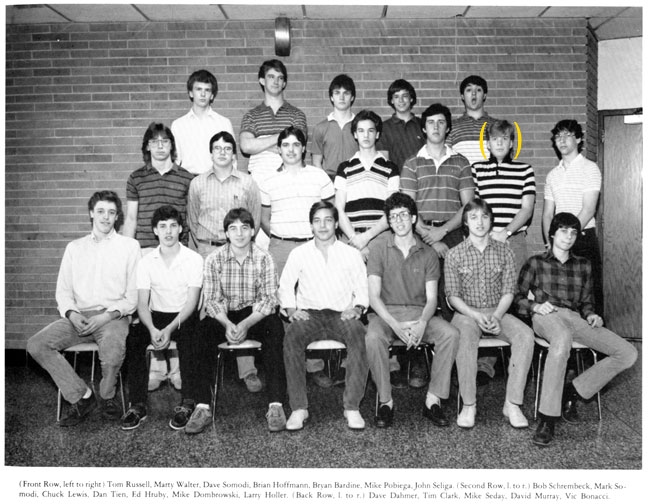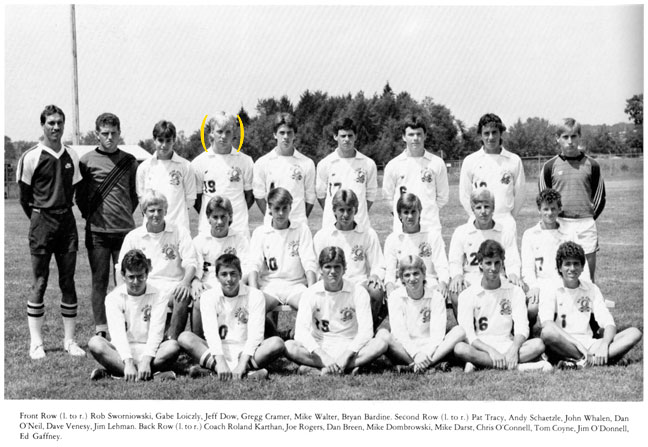 |
||||||
|
|
Yearbook The phenomenon of the yearbook is an odd one, and a relatively old one. More on this in a moment, but first let's corroborate some statements from an essay. In the essay "Well That's One Thing We Got," I claim that a friend of mine appears in a whole lot of club photos in his high school yearbook. He wasn't in these clubs, but on photo day, he lined up with all of them, at the least the ones he could get away with. I'm sure he's not the first one to do this, but still it's fairly awesome, and I believe in backing up my claims exhaustively on a few occasiona. Too, I have a fondness for high school pranks that are forever immortalized, by which I mean in photo, not in memory. Both are unreliable, right? This first photo claims to document the staff of the school newspaper, The Pioneer. It documents some version of that, probably those staff members who showed up, and possibly some interlopers. It is at best a necessary approximation: how else to get a group photo? The irony of this newspaper staff photo appearing in the yearbook is thus not lost in time:
* He also shows up on the Trek (yearbook) staff:
* and in the Social Action Committee:
* and in the Ski Club (which is oddly huge, especially for Ohio):
* And perhaps the best of the bunch, the Way, a Christian group "set out to serve the spiritual needs of students":
* and finally in JV Soccer:
It is probable that he was actually on the soccer team. When I went over to his house to help him and his sister and girlfriend sort through some boxes he had just recovered from his parents' house, the majority of the material in there were soccer pamphlets and instructions and magazines and programs from dozens of soccer games. Notably there were some D&D materials included and various other shameful artifacts that suggested the old edition of Mike. I like this legedermain because high school is after all where we try out various identities, where are forced into them as in cliques of one sort or another, if you believe the way everyone talks about high school. Later on, our identities settle a little bit more, but in school, you could theoretically shift year to year by going to a new school, or overhauling your look and attitude, and certainly there are opportunities for reinvention in the gap between high school and college. The yearbook freezes some of these old identities (or put-ons in Mike's case). I borrowed Mike's copy of Trek 1985 to make these scans, and holding the book, you notice a real physicality about it: the size, the weight, the smell of glue, the heavy boards of the hardcover, the relief print on the cover, the blank pages in front and back for signing. These are real books, you think, holding one. They are unmistakably yearbooks, made for the future. You might as well be listening to a mournful country song as you open it, so strong is the ephemeral feeling, the sense of identities discarded or worn for a year only. Only a few of us cling to our high school identities. Most of us transform, or would like to think we transform, and those old bodies, old minds regressed into metaphor. Until you run into someone whom you used to know, and the shift in perception is jarring. I'm surprised yearbooks haven't faded away like so many other rituals. I'm surprised we still seem to revere them, collect and sign them. I'm surpried they haven't at least become digital, or given way to the mass of ways in which we document our lives with blogs and tweets, texts and online chats and digital photograph after digital photograph, some erased immediately when we perceive a flaw, or because they were too sexy or dangerous to keep, and some thrown into iPhoto or shutterfly libraries, or posted on Flickr or any one of the other hundred thousand sites devoted to representing and documenting our own experiences. Maybe the yearbook remains because it is apparently objective, or neutral (the Associated Collegiate Press considers college yearbooks to be journalism), a centrally recorded and documented text that's ostensibly egalitarian: everyone appears (if they showed up). All the clubs get photos. All the sports get photos. It's a lot of work, which is why the yearbook club deserves their photo. There's a sense of integrity, unlike our more subjective attempts to stop time and keep it there on our machines and in our boxes. Probably born out of commonplace books where writers would compile quotes and miscellania, or perhaps out of the traditional yearly almanac, or even more likely out of that old precursor to the mass media, the scientific yearbook in which the discoveries of the year were published, the first high school yearbook, The Evergreen, was published in Waterville, NY. Yearbooks started to spread and expand rapidly around the birth of halftone and reliable letterpress printing, in the latter half of the 1800s, allowing photographs to be easily included. Incidentally, though I failed to graduate, I appear in my high school yearbook. I get space there too, though in retrospect it reads more like an obituary--one of those we lost, one of those who didn't make it--than a celebration. Thanks to whichever anonymous friend managed to make that magic work. |
